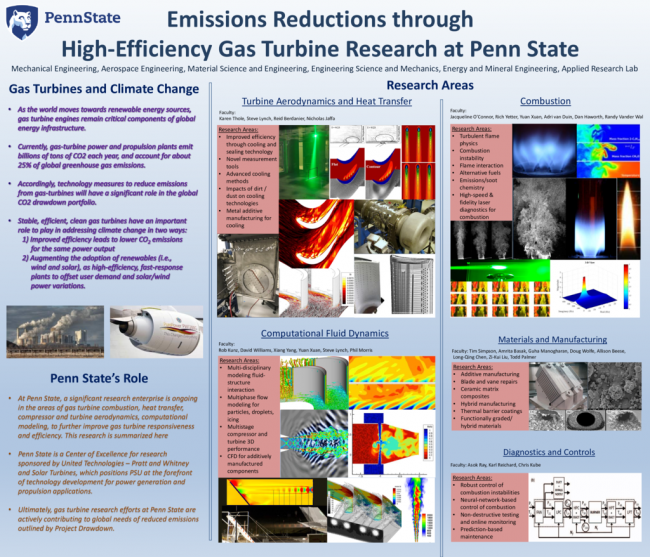Gas turbine engines play a key role in power generation and aircraft transportation across the globe. As a result, emission reduction targets proposed through Project Drawdown include gas turbines as a necessary constituent. For electrical power generation infrastructure, gas turbines play an important role as high-efficiency, fast-response plants that balance short time-scale variations caused by user demand and renewable power (i.e., wind and solar), to ensure reliable and clean power for millions across the United States and the world. In this way, gas turbines are a necessary contributor to the power production needs of the present and the future. For aircraft transportation, propulsion solutions such as the geared turbofan represent a step-change in an otherwise asymptotic history of efficiency gains. At Penn State, a concerted research effort is ongoing in the areas of gas turbine combustion, heat transfer, compressor and turbine aerodynamics, and the development of computational tools to further improve gas turbine responsiveness and efficiency. Penn State is a Center of Excellence for research sponsored by United Technologies – Pratt and Whitney and Solar Turbines, which positions PSU at the forefront of technology development for power generation and propulsion applications. Active research programs include combustion instabilities to enable reduced flame temperatures, novel turbine blade cooling designs to increase overall efficiency, and a combination of experimental and computational approaches to incorporate additive manufacturing for gas turbine components. Ultimately, gas turbine research efforts at Penn State are actively contributing to global needs of reduced emissions outlined by Project Drawdown.
Day
Tuesday Poster Session
Related Conference Themes
Electricity Generation
Transportation


